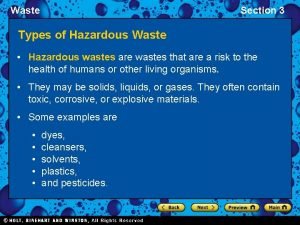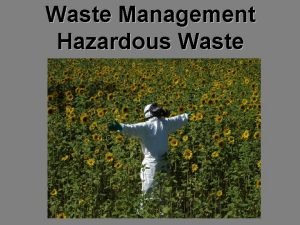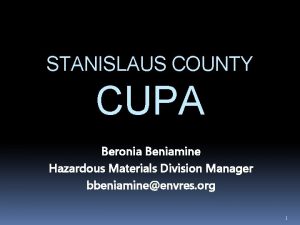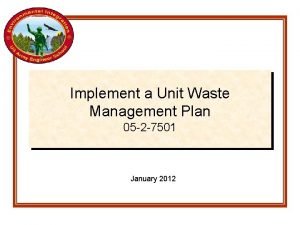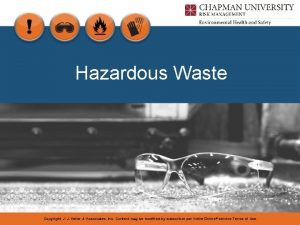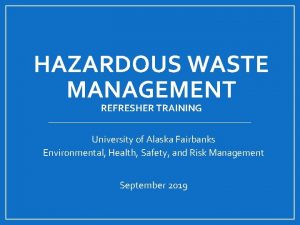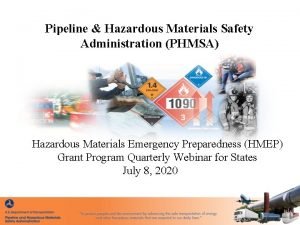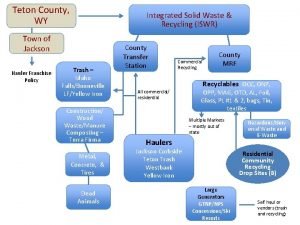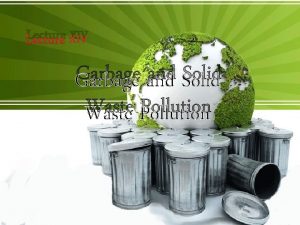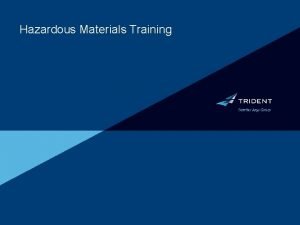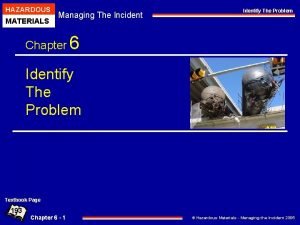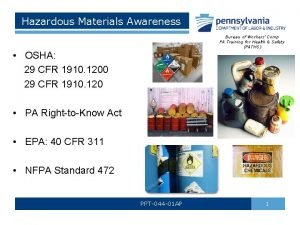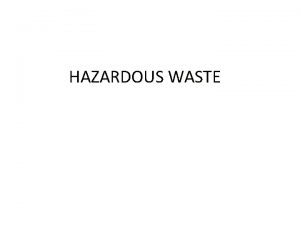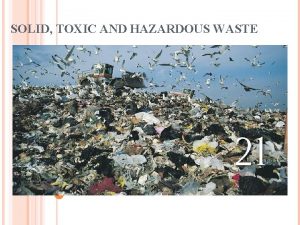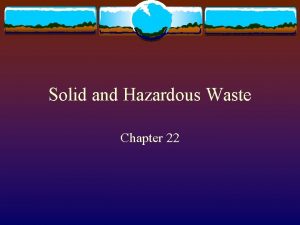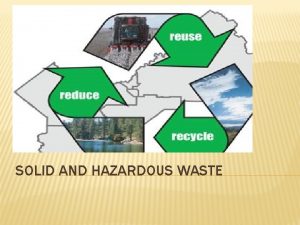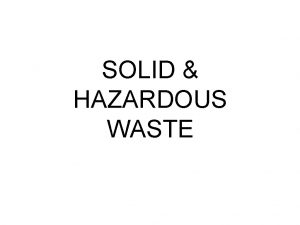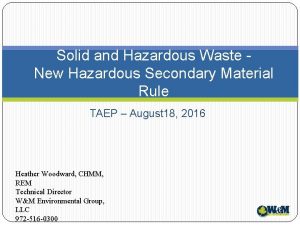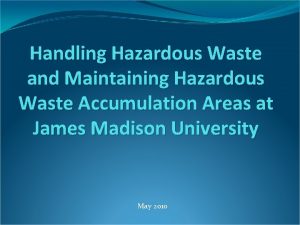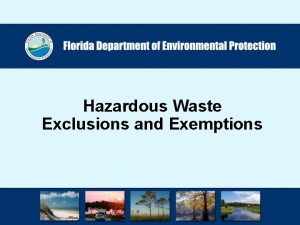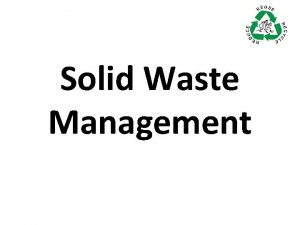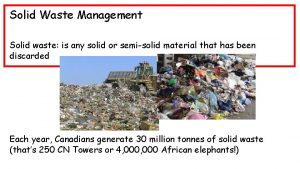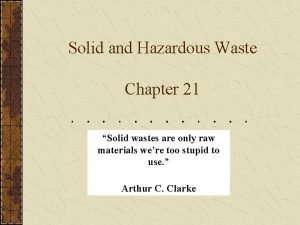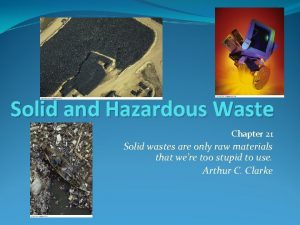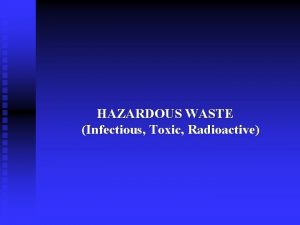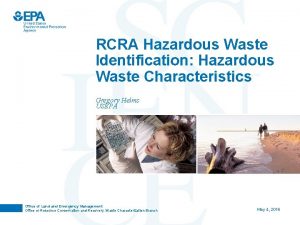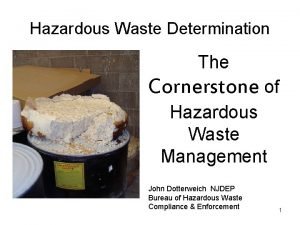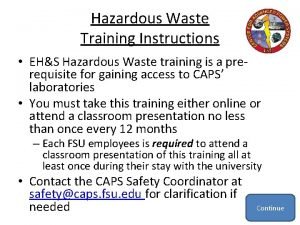Solid and Hazardous Waste Chapter 22 Solid waste






















- Slides: 22

Solid and Hazardous Waste Chapter 22

Solid waste v Most solid waste in the US is produced by industry v 75% mining v 13% agriculture v 9. 5% industrial v 1% sludge v Only 1. 5% of waste is household waste

That’s a lot of trash v Municipal solid waste – household waste averaged about 1500 pounds person in the US v This is two to three times other developed countries

Hazardous Waste v The legal definition: v Contains one of 39 toxic, carcinogenic, mutagenic, or teratogenic compounds above EPA limits v Catches fire easily v Reactive or unstable v Capable of corroding metal containers

Hazardous Waste v What is not defined as hazardous v Radioactive v Household toxic chemicals v Mining waste with heavy metals v Oil drilling waste v Liquid waste with organic hydrocarbon compounds v Cement dust v Small business hazardous waste if under 100 kilograms per month

Hazardous!! v It is estimated that of the 5. 5 billion metric tons produced each year, only 6% is defined as hazardous and monitored correctly v 94% is discarded by homes and industry not defined as hazardous and is therefore not regulated

Two options v Waste management – develop methods for storing and neutralizing waste v Pollution prevention – find ways to decrease amount of waste produced v This is the four “R’s”

Waste prevention v Reduce v Reuse v Recycle v Rot (compost) v Redesign v These are listed in order of increasing energy required


Our new goal v Reduce waste pollution v Reuse as much as possible v Recycle/compost as much as possible v Chemically treat/incinerate the rest v Bury the remaining material in a sanitary landfill


Producing less waste best choice v Save energy and virgin resources v Reduce environmental impact of acquiring material v Improve worker health and safety v Decrease pollution control/waste management costs v Less long term costs associated with cleanup

Ways to produce less waste Decrease consumption v Redesign manufacturing to use less virgin material v Redesign products to be less polluting v Redesign manufacturing to be more efficient v Use less hazardous products at home v Design products to last longer (non-disposable) v Reduce packaging v Trash tax – pay by the pound v









 Solid and hazardous waste
Solid and hazardous waste Section 3 hazardous waste answers
Section 3 hazardous waste answers Bio medical waste management introduction
Bio medical waste management introduction Hazardous waste apes
Hazardous waste apes What is toxic waste
What is toxic waste Stanislaus county hazardous materials division
Stanislaus county hazardous materials division Segregation of hazardous waste
Segregation of hazardous waste Hazardous waste transportation
Hazardous waste transportation Alaska hazmat training
Alaska hazmat training Pipeline and hazardous materials administration
Pipeline and hazardous materials administration Rexburg transfer station
Rexburg transfer station Wicler
Wicler Crystalline solid and amorphous solid
Crystalline solid and amorphous solid Polycrystalline solids
Polycrystalline solids Crystalline solid
Crystalline solid Crystalline solid and amorphous solid
Crystalline solid and amorphous solid Anisotropy
Anisotropy Aviation hazardous attitudes
Aviation hazardous attitudes Hazardous materials table
Hazardous materials table Hazardous materials table
Hazardous materials table Hazardous
Hazardous Hazwoper
Hazwoper Five hazardous attitudes
Five hazardous attitudes

